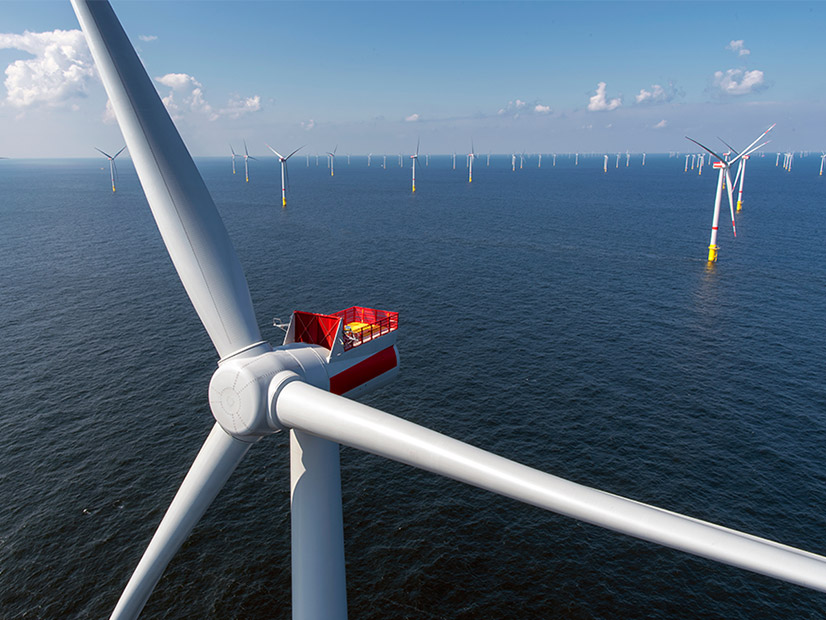New Jersey’s Board of Public Utilities launched a new solicitation for offshore wind coastal infrastructure Nov. 17 as the heads of the BPU and the Economic Development Authority reaffirmed the state’s commitment to developing OSW projects in the wake of Ørsted’s abandonment of its two projects.
The BPU board, with a 4-0 vote, opened a solicitation for proposals to build a link between future wind projects developed off the Jersey Shore and the onshore substation infrastructure backed at the conclusion of a State Agreement Approach (SAA) solicitation on Oct. 26, 2022. (See NJ BPU OKs $1.07B OSW Transmission Expansion.)
The BPU vote opened the new infrastructure solicitation with a submission deadline of April 3, 2024. The agency set out a schedule in which favored proposals would be picked in the third quarter of 2024, with an expected project in-service date of January 2029.
Brushing off Ørsted’s withdrawal, BPU President Christine Guhl-Sadovy said at the meeting the agency is “looking forward” to the third solicitation for offshore wind developments and said it had been “our most competitive yet.”
“Offshore wind is, and continues to be, the economic development opportunity of a generation and remains a key tool in climate change mitigation,” she said. “We remain excited about the prospect for a future generation and transmission solicitations.”
Protecting Ratepayers
Gov. Phil Murphy (D) has set a state wind capacity target of 11 GW by 2040, of which the BPU so far has awarded 3,758 MW. The BPU approved its first OSW project, Ørsted’s 1,100-MW Ocean Wind 1, in the first solicitation in 2019, and two other projects — the 1,148-MW Ocean Wind 2 project and the 1,510-MW Atlantic Shores project — in the second solicitation, in 2021.
The Atlantic Shores project continues to move ahead. But Ørsted stunned New Jersey officials on Nov. 1 by cancelling its two Ocean Wind projects, saying that cost increases had made the projects untenable. (See Ørsted Cancels Ocean Wind, Suspends Skipjack.)
In the state’s third solicitation, the BPU initially required developers submitting bids to include plans for the construction of infrastructure — known as pre-build infrastructure or PBI — that could tie several projects to the on-land infrastructure. But the board on Oct. 25 split off the offshore infrastructure requirement, saying that such a plan would impose an “unreasonable burden” on ratepayers, and that separating the two elements would create greater competition for the infrastructure projects. (See NJ Revamps Third Solicitation OSW Connection Plans.)
Jim Ferris, deputy director of the BPU’s division of clean energy, told the board Nov. 17 that the agency’s initial strategy of bundling the project and PBI elements together would have meant the developers would be awarded incentives for the entire package in offshore wind Renewable Energy Certificates.
Staff reviewed the proposals and found they represented an unreasonable burden for New Jersey’s ratepayers, he said, and that separating the two has not affected the projects already submitted for the third solicitation.
Servicing Multiple Projects
Four bidders submitted plans for the third solicitation, which could add OSW capacity of between 1.2 GW and 4 GW, and perhaps more, according to the guidance document for the solicitation. (See NJ Opens Third OSW Solicitation Seeking 4 GW+.)
The solicitation, which the BPU released as an attachment to its order, seeks proposals for “all cable vaults, duct banks and related facilities for four (4) separate qualified projects, enabling qualified project developers to install their cables into the prebuild by pulling them through the completed prebuild infrastructure facilities.”
Unlike the first infrastructure solicitation, held under the SAA agreement, the BPU will conduct the new infrastructure solicitation solely with BPU staff rather than in partnership with PJM, but will get “support from PJM, as requested by staff,” according to the order. The solicitation adds that it is open to companies that are prequalified through “PJM’s planning process to be a Designated Entity.”
Optimism for the Future
The state’s commitment to offshore wind includes extensive investment in creating infrastructure to support the development of a supply chain and logistics services that can support the projects, including the development of the New Jersey Wind Port on the Delaware River.
Much of that work has been funded by the EDA, where Chairman Terence “Terry” O’Toole — speaking at the agency’s monthly meeting Nov. 16 — called Ørsted’s decision “very disappointing and frustrating news.” He said that “despite the setback, there continue to be massive opportunities for New Jersey in this new sector and making investments in infrastructure and the manufacturing capacity support.”
Tim Sullivan, EDA’s CEO, said the agency has “continued optimism” about the sector, in part because “there is so much private capital being invested in the US wind industry, there’s so many private sector interests.”


